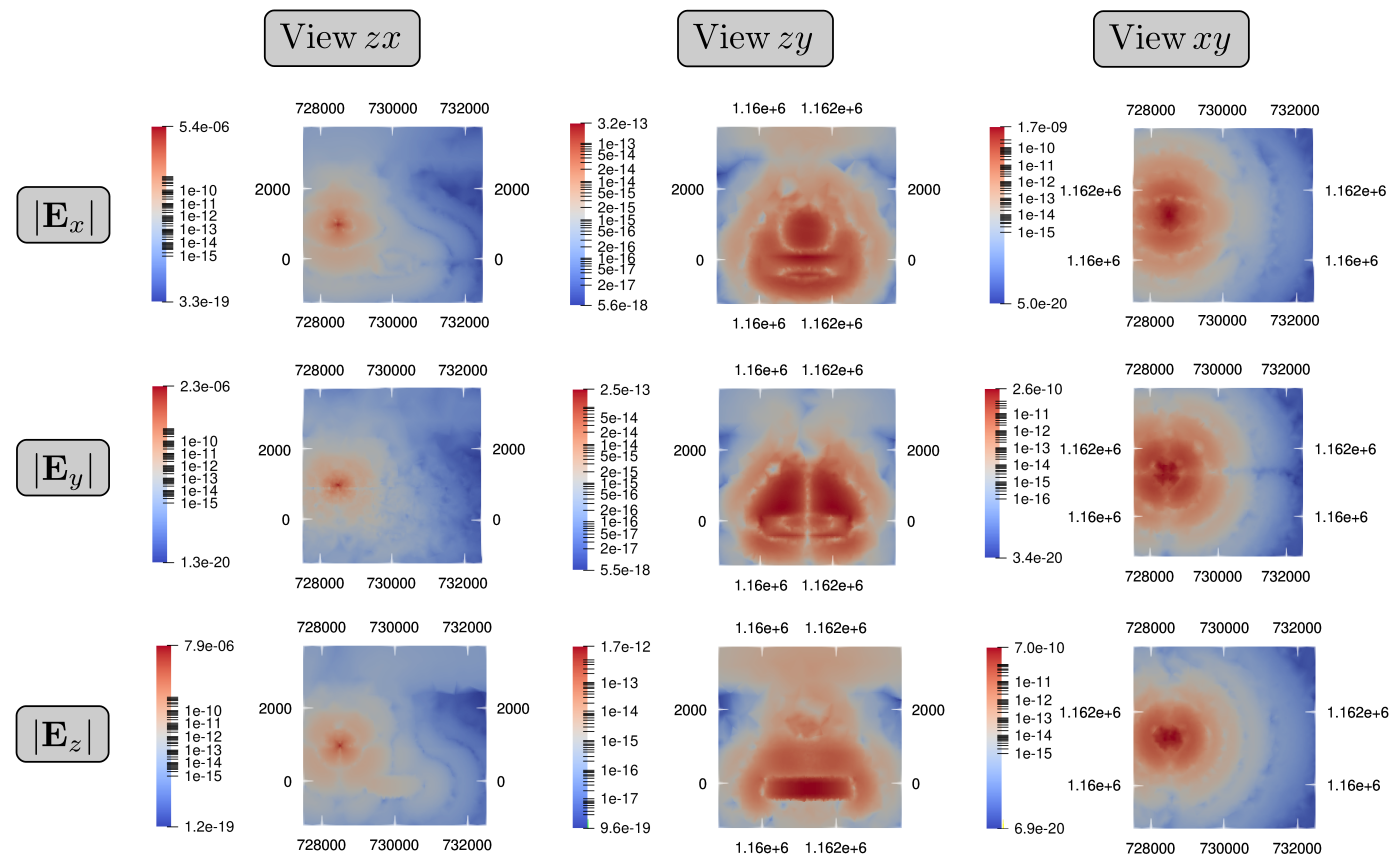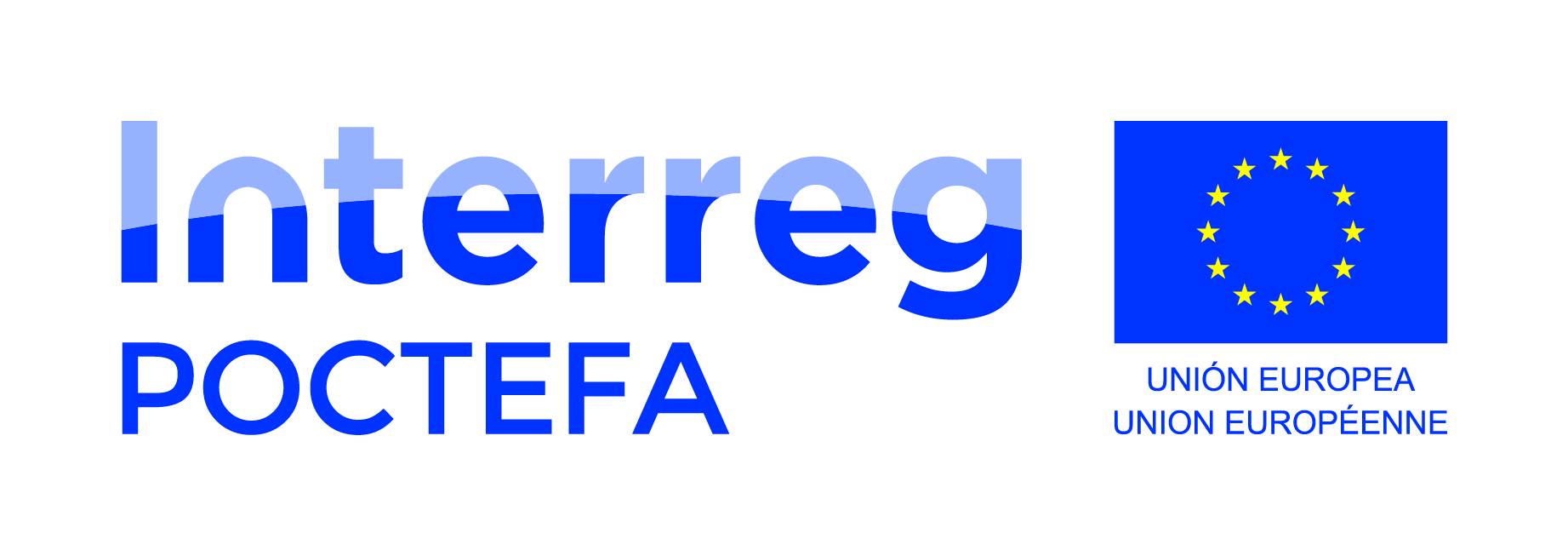
Figure 1: Electric field amplitude response of the 3D resistivity model with topography and around a reservoir unit. Threeview profiles of the vector electric field components are given.
In the scope of the PIXIL project, researchers of the Barcelona Supercomputing Center (BSC) have investigated the potential of HPC and electromagnetic methods for characterization of geothermal reservoirs. The net result of this effort is a new version of the PETGEM, which is a parallel routine for modeling of electromagnetic data in the context of exploration geophysics. The latest release supports active-source (e.g., controlled-source electromagnetic method) and passive-source (e.g., magnetotelluric method) EM methods.
PETGEM focuses on detecting and characterizing geothermal reservoirs (and other valuable resources) based upon EM methods and High-performance Computing (HPC). This tool provides key information to reduce ambiguities in interpreting geophysical datasets through mapping conductivity variations in the subsurface. Based on cutting-edge numerical methods, the PETGEM workflow has been proven to be a flexible, accurate, and efficient large-scale scheme for the solution of realistic test cases in marine and land contexts.
The task of developing and implementing the new PETGEM version required collaboration between academic institutions, of which the Universitat de Barcelona, BCAM and BSC stand out. In addition, it has been
possible to establish a link with the industrial sector to improve the technological tool. In particular, it has collaborated with Geode-Solutions in the development of a demonstrator for the generation of meshes adapted for electromagnetic modeling with PETGEM. This academy-industry collaboration has been formalized through the signing of a limited use license between the BSC and Geode-solutions. Additionally, PETGEM has been selected for the first pre-assessment study of the Lab-to-Market (L2M) program of the R+D+I Energy for Society Network (XRE4S). The L2M program is the XRE4S technology scouting program. It consists on the pre-screening on technology assessment, market opportunity and analysis of the intellectual property status and strategy. Several technical meetings with industry have derived from this activity, of which with REPSOL, Mira Geoscience, EMGS, and Ocean Floor Geophysics stand out.
The dissemination tasks of this research work have been diverse and with a positive impact for the scientific community and companies interested in numerical simulation, electromagnetic modeling and its application in the field of geothermal energy and exploitation geophysics in general. The most relevant scientific publications are the following:
- Castillo-Reyes, O., de la Puente, J., & Cela, J. M. (2022). HPC Geophysical Electromagnetics: A Synthetic VTI Model with Complex Bathymetry. Energies, 15(4), 1272
- Castillo-Reyes, O., Modesto, D., Queralt, P., Marcuello, A., Ledo, J., Amor-Martin, A., de la Puente, J., García-Castillo, L. E. (2022). 3D magnetotelluric modeling using high-order tetrahedral Nédélec elements on massively parallel computing platforms. Computers & Geosciences, 105030.
- Werthmüller, D., Rochlitz, R., Castillo-Reyes, O., Heagy, L. (2021). Towards an open-source landscape for 3-D CSEM modelling. Geophysical Journal International, 227(1), 644-659.
- Castillo-Reyes, O., Queralt, P., Marcuello, A., Ledo J. (2021). Land CSEM simulations and experimental test using metallic casing in a geothermal exploration context: Valles Basin (NE Spain) case study. IEEE Transactions on Geoscience and Remote Sensing 60: 1-13.
- Castillo-Reyes, O., Reyes, Queralt, P., Marcuello, A., Ledo J., Mitjanas G., de la Puente J. (2020). Control Source Electromagnetic test in the Vallès Basin (Spain) for geothermal characterization: experiment setup and numerical simulations. In AGU Fall Meeting 2020. AGU.
In view of the scientific research results, BSC researchers conclude that PETGEM features satisfy modeling requirements of challenging and arbitrarily 3D CSEM/MT setups using both modest multi-core architectures and large-scale parallel computing clusters. The upgraded code version and numerical experiments obtained in the scope of the PIXIL project prove useful for geophysicists interested in arbitrary passive-source and active-source EM modeling in the context of geothermal reservoir characterization.



